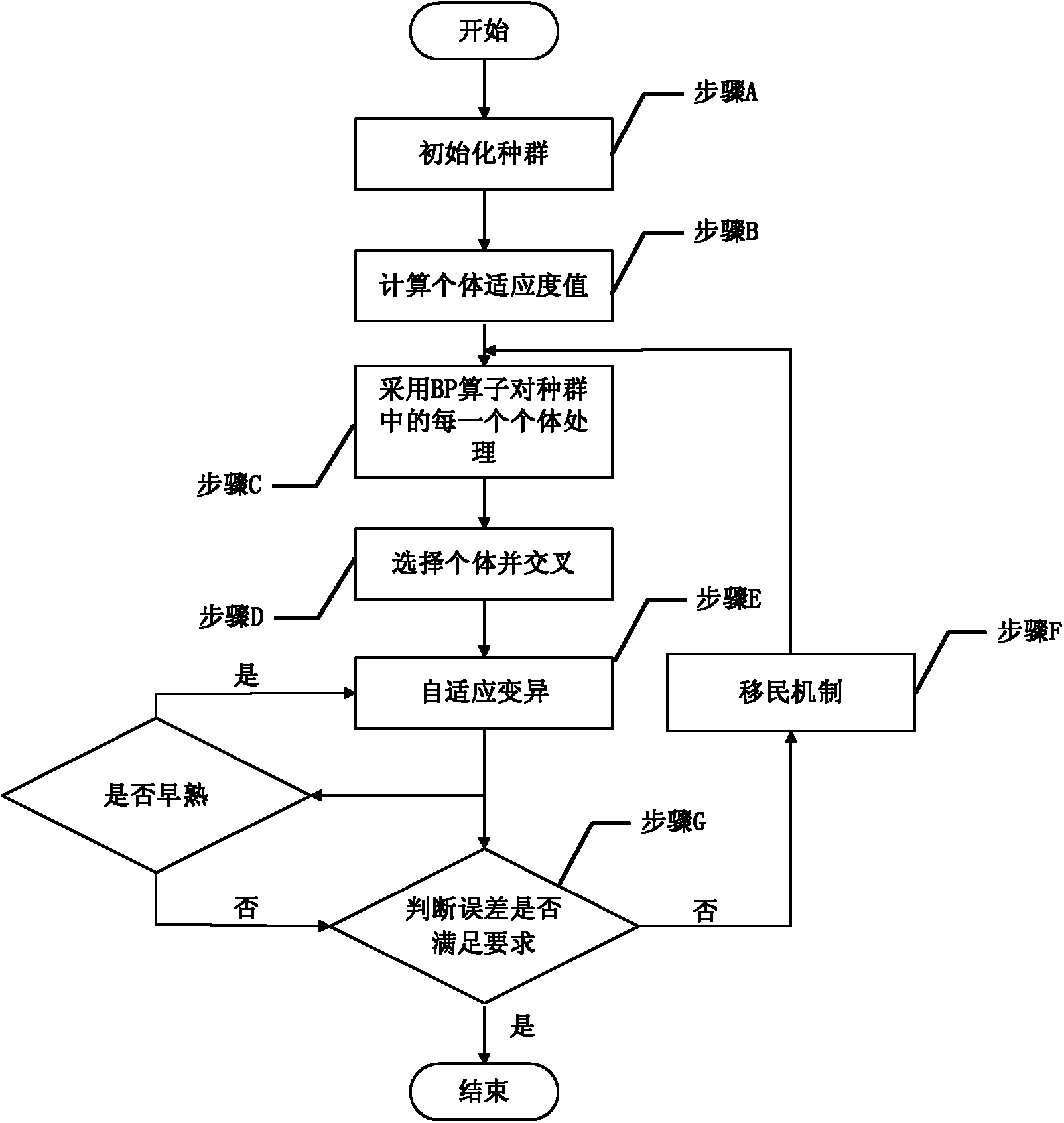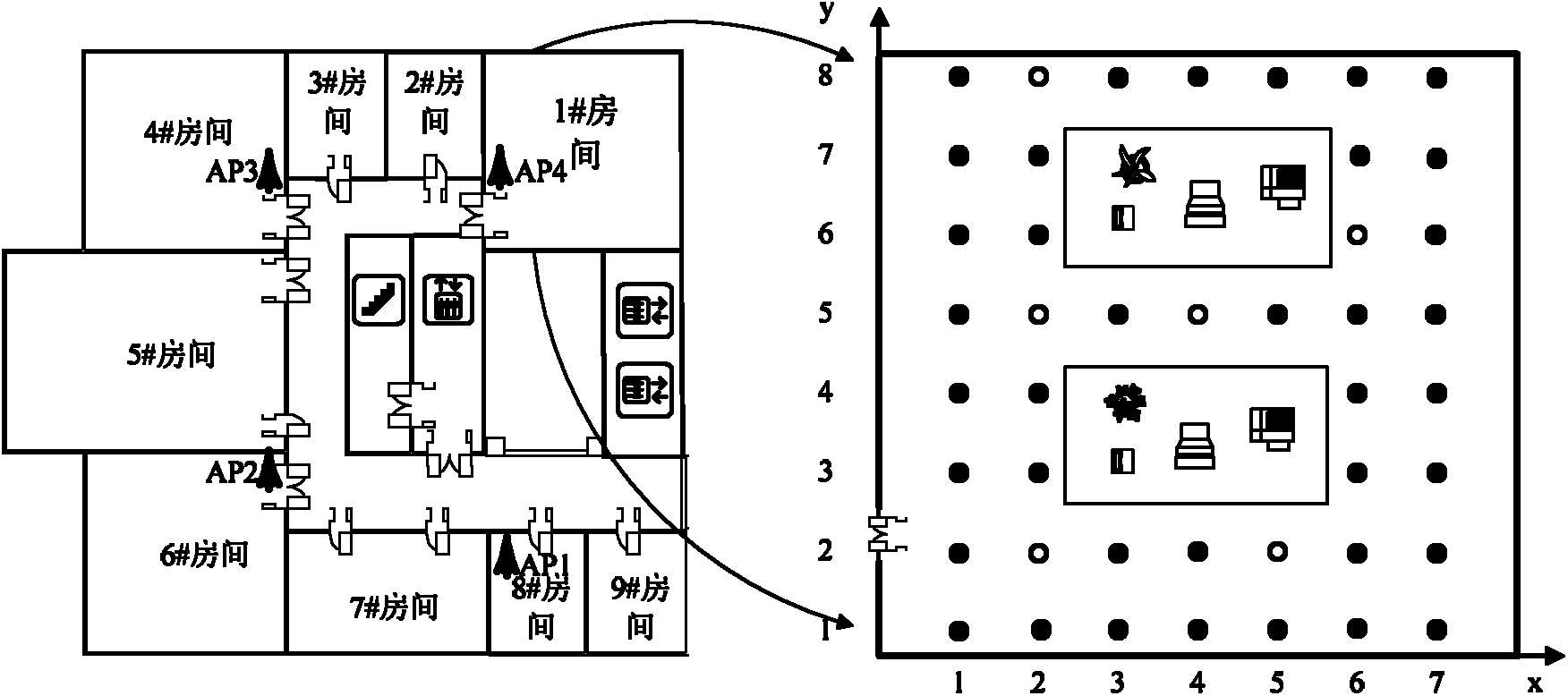ANFIS (Adaptive Neural Fuzzy Inference System) indoor positioning method based on improved GA(Genetic Algorithm) optimization in WLAN (Wireless Local Area Network) environment
An indoor positioning and environmental technology, applied in electrical components, wireless communication, etc., can solve problems such as slow convergence speed of BP algorithm, local minimal genetic algorithm, slow evolution speed, etc., achieve fast global optimization, speed up convergence speed, and simple method Effect
- Summary
- Abstract
- Description
- Claims
- Application Information
AI Technical Summary
Problems solved by technology
Method used
Image
Examples
specific Embodiment approach 1
[0017] Specific implementation mode one: combine figure 1 Describe this implementation mode, this implementation mode comprises concrete steps as follows:
[0018] Step 1. Arranging several access points AP in the WLAN indoor positioning environment to ensure that any point in the environment is covered by signals sent by two or more access points AP;
[0019] Step 2: Set N reference points in the indoor environment, choose a reference point as the origin to establish a rectangular coordinate system, obtain the coordinate positions of the N reference points in the rectangular coordinate system, and use the signal receiver on each reference point Collect the signal strength value from each access point AP, obtain ANFIS training samples, and establish the corresponding relationship between the actual coordinates of the reference point and the signal strength of the received access point AP, that is, the radio map (Radio Map);
[0020] Step 3. Establish the ANFIS positioning sub...
specific Embodiment approach 2
[0023] Specific implementation mode two: combination figure 2 Illustrate this embodiment, the specific steps of the improved genetic algorithm described in step 4 in the specific embodiment one are:
[0024] Step A: Initialize the population, set the population size, that is, the number of individuals in the population and the maximum genetic algebra; encode the parameters to be adjusted in the ANFIS network with real numbers to form a code string, which is used as the individual gene in the genetic algorithm; ANFIS in each coordinate direction In the positioning subsystem, there are three types of parameters that need to be adjusted: the first type is the rule consequence parameters of the fourth layer of the network, and the second and third types of adjustable parameters are the mean value and standard deviation of the Gaussian membership function in the fuzzy layer; Each parameter to be adjusted corresponds to a bit in the gene code string; each gene code string correspon...
specific Embodiment approach 3
[0043] Specific embodiment three: the implementation method of the BP operator described in step C in the specific embodiment one is: at first obtain training error, then obtain ANFIS network error negative gradient direction correction weight according to BP algorithm, described concrete process is:
[0044] In the L-layer ANFSI network, if there is n on the kth layer k nodes, and there are P groups of input and output data in the training sample set, and the objective function corresponding to the pth (1≤p≤P) group of data is defined as the root mean square error, as follows:
[0045] E = ( 1 p Σ p = 1 P E p ) 1 2 = ...
PUM
 Login to View More
Login to View More Abstract
Description
Claims
Application Information
 Login to View More
Login to View More - R&D
- Intellectual Property
- Life Sciences
- Materials
- Tech Scout
- Unparalleled Data Quality
- Higher Quality Content
- 60% Fewer Hallucinations
Browse by: Latest US Patents, China's latest patents, Technical Efficacy Thesaurus, Application Domain, Technology Topic, Popular Technical Reports.
© 2025 PatSnap. All rights reserved.Legal|Privacy policy|Modern Slavery Act Transparency Statement|Sitemap|About US| Contact US: help@patsnap.com



